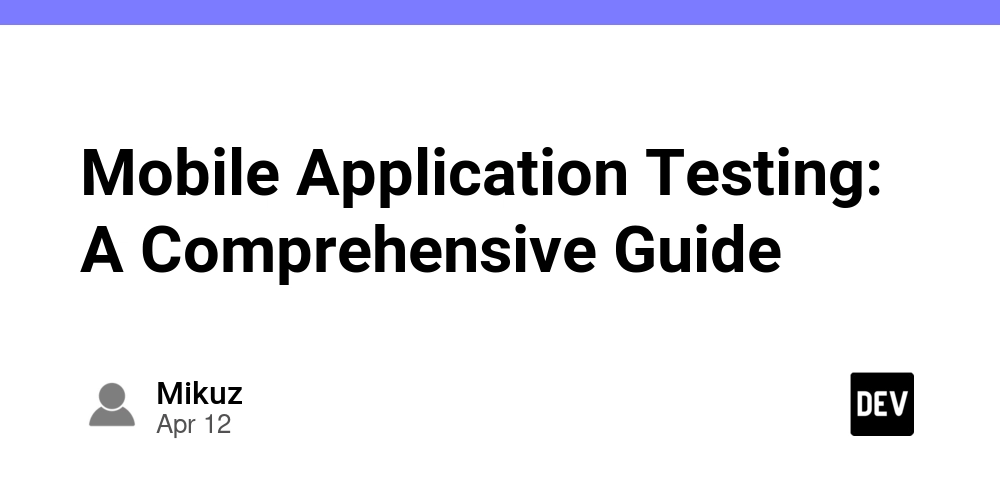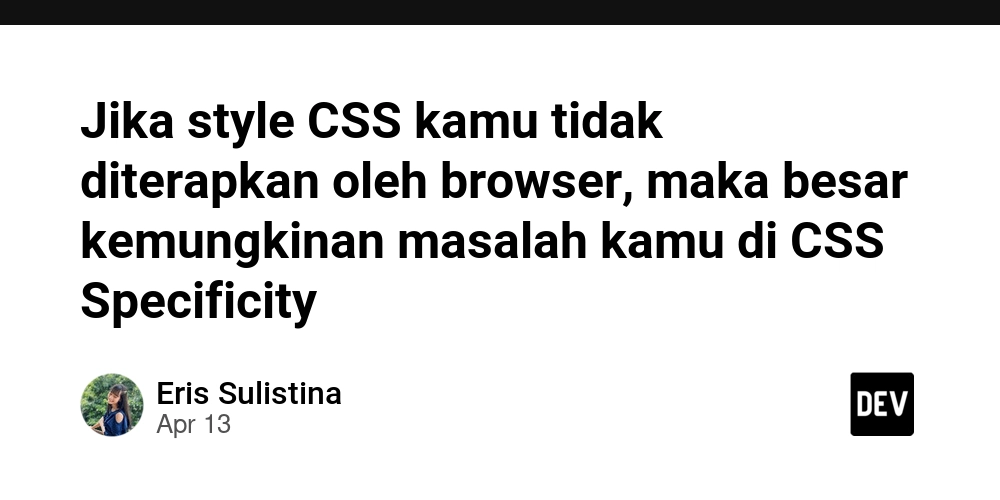Mobile Application Testing: A Comprehensive Guide
Mobile application testing is a critical process that ensures apps work flawlessly across multiple devices and platforms. As smartphones, tablets, and wearables become increasingly central to daily life, developers must rigorously verify their apps' functionality, user experience, and performance. Recent data shows mobile apps dominate internet traffic, with billions of downloads expected from major app stores by 2026. However, high uninstall rates—over 46% for Android apps—indicate users have little patience for problematic applications. Through comprehensive testing, developers can identify and fix issues like poor performance, intrusive ads, and usability problems before release, ultimately creating more successful and sustainable mobile applications. Types of Mobile Applications Native Applications Native apps are purpose-built for specific mobile platforms using dedicated programming languages. Android developers typically use Java or Kotlin, while iOS developers work with Swift. These applications, distributed through official app stores, offer optimal performance and full access to device features. Popular examples include WhatsApp, Instagram, and Spotify, which provide seamless user experiences tailored to each platform's unique characteristics. Web Applications Mobile web applications run directly in browsers, eliminating the need for installation. Built with standard web technologies like HTML, CSS, and JavaScript, these apps adapt to different screen sizes through responsive design. While they offer broad accessibility and easy updates, they may have limited access to device features compared to native apps. Gmail and Twitter's web versions exemplify this approach, providing essential functionality through browser interfaces. Hybrid Applications Hybrid apps bridge the gap between native and web applications, using a single codebase to target multiple platforms. Frameworks like React Native and Flutter enable developers to create applications that feel native while maintaining development efficiency. Discord demonstrates how hybrid apps can deliver consistent experiences across platforms while reducing development complexity and maintenance costs. Progressive Web Applications (PWAs) PWAs represent the evolution of web applications, offering features traditionally associated with native apps. These applications can work offline, send push notifications, and access device hardware while being installable directly from browsers. Facebook Lite and Twitter Lite showcase how PWAs can provide app-like experiences with smaller footprints and easier distribution than traditional native applications. Development Considerations Each application type presents unique advantages and challenges. Native apps excel in performance and functionality but require platform-specific development. Web apps offer broad reach but may sacrifice advanced features. Hybrid solutions balance development efficiency with native capabilities, while PWAs provide a middle ground for organizations seeking to combine web and mobile experiences. Choosing the right approach depends on factors like target audience, required features, development resources, and maintenance capabilities. Essential Types of Mobile Testing Functional Testing Fundamentals Functional testing examines core application behaviors to ensure reliable operation. Testers verify installation processes, launch sequences, and user authentication systems. Every interactive element requires validation—from button responses to text input handling. Critical checks include permission management, data processing, and feature completeness across all user workflows. This testing phase builds confidence in the application's basic operations before advancing to more specialized evaluations. Device Compatibility Verification Modern mobile applications must function across diverse hardware configurations and operating systems. Testers create strategic device matrices based on market analytics, prioritizing popular devices and screen sizes. While testing every possible combination proves impractical, focusing on widespread configurations ensures optimal coverage. This approach balances thorough testing with resource efficiency, addressing potential compatibility issues before they reach users. Regional Adaptation Testing Applications targeting international markets require thorough localization testing. This process verifies that apps correctly handle regional variations in language, currency, and time formats. Testers confirm proper timezone synchronization, validate translation accuracy within specific contexts, and verify appropriate formatting of numerical data. These checks ensure users worldwide receive culturally appropriate and functionally correct experiences, directly impacting user retention rates. Interruption Management Testing Mobile apps ope

Mobile application testing is a critical process that ensures apps work flawlessly across multiple devices and platforms. As smartphones, tablets, and wearables become increasingly central to daily life, developers must rigorously verify their apps' functionality, user experience, and performance. Recent data shows mobile apps dominate internet traffic, with billions of downloads expected from major app stores by 2026. However, high uninstall rates—over 46% for Android apps—indicate users have little patience for problematic applications. Through comprehensive testing, developers can identify and fix issues like poor performance, intrusive ads, and usability problems before release, ultimately creating more successful and sustainable mobile applications.
Types of Mobile Applications
Native Applications
Native apps are purpose-built for specific mobile platforms using dedicated programming languages. Android developers typically use Java or Kotlin, while iOS developers work with Swift. These applications, distributed through official app stores, offer optimal performance and full access to device features. Popular examples include WhatsApp, Instagram, and Spotify, which provide seamless user experiences tailored to each platform's unique characteristics.
Web Applications
Mobile web applications run directly in browsers, eliminating the need for installation. Built with standard web technologies like HTML, CSS, and JavaScript, these apps adapt to different screen sizes through responsive design. While they offer broad accessibility and easy updates, they may have limited access to device features compared to native apps. Gmail and Twitter's web versions exemplify this approach, providing essential functionality through browser interfaces.
Hybrid Applications
Hybrid apps bridge the gap between native and web applications, using a single codebase to target multiple platforms. Frameworks like React Native and Flutter enable developers to create applications that feel native while maintaining development efficiency. Discord demonstrates how hybrid apps can deliver consistent experiences across platforms while reducing development complexity and maintenance costs.
Progressive Web Applications (PWAs)
PWAs represent the evolution of web applications, offering features traditionally associated with native apps. These applications can work offline, send push notifications, and access device hardware while being installable directly from browsers. Facebook Lite and Twitter Lite showcase how PWAs can provide app-like experiences with smaller footprints and easier distribution than traditional native applications.
Development Considerations
Each application type presents unique advantages and challenges. Native apps excel in performance and functionality but require platform-specific development. Web apps offer broad reach but may sacrifice advanced features. Hybrid solutions balance development efficiency with native capabilities, while PWAs provide a middle ground for organizations seeking to combine web and mobile experiences. Choosing the right approach depends on factors like target audience, required features, development resources, and maintenance capabilities.
Essential Types of Mobile Testing
Functional Testing Fundamentals
Functional testing examines core application behaviors to ensure reliable operation. Testers verify installation processes, launch sequences, and user authentication systems. Every interactive element requires validation—from button responses to text input handling. Critical checks include permission management, data processing, and feature completeness across all user workflows. This testing phase builds confidence in the application's basic operations before advancing to more specialized evaluations.
Device Compatibility Verification
Modern mobile applications must function across diverse hardware configurations and operating systems. Testers create strategic device matrices based on market analytics, prioritizing popular devices and screen sizes. While testing every possible combination proves impractical, focusing on widespread configurations ensures optimal coverage. This approach balances thorough testing with resource efficiency, addressing potential compatibility issues before they reach users.
Regional Adaptation Testing
Applications targeting international markets require thorough localization testing. This process verifies that apps correctly handle regional variations in language, currency, and time formats. Testers confirm proper timezone synchronization, validate translation accuracy within specific contexts, and verify appropriate formatting of numerical data. These checks ensure users worldwide receive culturally appropriate and functionally correct experiences, directly impacting user retention rates.
Interruption Management Testing
Mobile apps operate in highly dynamic environments where interruptions are common. Testing must verify appropriate handling of incoming calls, messages, notifications, and system alerts. Applications should maintain data integrity during interruptions and resume smoothly after disruptions. Key scenarios include testing behavior during battery warnings, network changes, and multi-tasking transitions. This ensures users can confidently switch between tasks without losing progress or experiencing crashes.
Performance Evaluation
Performance testing focuses on delivering smooth, responsive user experiences across varying conditions. Testers measure application launch times, screen transition speeds, and response rates to user interactions. Resource consumption analysis covers battery usage, memory management, and network efficiency. This comprehensive evaluation helps identify bottlenecks and optimization opportunities before they impact user satisfaction. Regular performance monitoring ensures applications maintain high standards throughout their lifecycle.
Implementing Effective Mobile Testing Strategies
Strategic Test Planning
Successful mobile testing begins with detailed planning that aligns with development objectives. Teams must establish clear testing goals, define comprehensive scope parameters, and create measurable success criteria. The planning phase should identify potential risks, outline resource requirements, and establish realistic timelines. Documentation of testing procedures ensures consistency and enables effective communication across development teams.
Testing Timeline Integration
Quality assurance should integrate seamlessly throughout the development lifecycle rather than occurring only at project completion. Early testing involvement helps identify issues when they're least expensive to fix. Continuous testing practices enable teams to maintain quality standards while adapting to rapid development changes. This approach reduces bottlenecks and prevents the accumulation of technical debt that could impact release schedules.
Addressing Common Challenges
Mobile testing teams frequently encounter several key challenges. Device fragmentation requires careful management of testing resources across multiple hardware configurations. Network condition variations demand testing under different connectivity scenarios. Automation complexity increases when dealing with multiple operating systems and platform-specific features. Successful testing strategies must account for these challenges while maintaining efficient testing processes.
Best Practice Implementation
Industry-leading testing approaches emphasize several core practices. Early testing integration prevents costly late-stage discoveries. User experience prioritization ensures testing reflects real-world usage patterns. Physical device testing provides insights that emulators alone cannot capture. Automation tools like Appium accelerate testing cycles while maintaining consistency. Regular test suite updates ensure coverage remains relevant as platforms evolve.
Modern Testing Solutions
Contemporary testing platforms leverage artificial intelligence and low-code solutions to enhance testing efficiency. These tools support automated testing across multiple browsers and viewports, reducing manual testing burden. Advanced features include automated test generation, intelligent test maintenance, and comprehensive reporting capabilities. Integration with existing development tools streamlines the testing workflow and improves team productivity.
Measuring Testing Success
Effective testing strategies include clear metrics for success evaluation. Teams should track key performance indicators such as test coverage, defect detection rates, and automation efficiency. Regular assessment of these metrics helps identify areas for improvement and validates testing effectiveness. This data-driven approach ensures testing strategies evolve to meet changing project requirements and market demands.
Conclusion
Mobile application testing stands as a crucial component in delivering high-quality applications that meet user expectations. The increasing complexity of mobile environments, combined with rising user demands, requires a sophisticated and comprehensive testing approach. Development teams must balance thorough testing across multiple devices and platforms while maintaining efficient development cycles and resource utilization.
The success of mobile applications heavily depends on implementing robust testing strategies that cover functional, compatibility, performance, and user experience aspects. By addressing testing requirements early in development and maintaining consistent quality checks throughout the process, teams can significantly reduce post-release issues and improve user retention rates.
Modern testing tools and automation solutions have transformed how teams approach mobile testing, making it more efficient and reliable. However, the human element remains crucial in understanding user needs and ensuring meaningful test coverage. Organizations that combine automated testing capabilities with strategic manual testing often achieve the best results.
As mobile technology continues to evolve, testing strategies must adapt to new challenges and opportunities. Teams that maintain flexible testing frameworks while adhering to established best practices will be best positioned to deliver successful mobile applications that meet and exceed user expectations in an increasingly competitive market.










































































































































































![[The AI Show Episode 143]: ChatGPT Revenue Surge, New AGI Timelines, Amazon’s AI Agent, Claude for Education, Model Context Protocol & LLMs Pass the Turing Test](https://www.marketingaiinstitute.com/hubfs/ep%20143%20cover.png)





























































































































![From Accountant to Data Engineer with Alyson La [Podcast #168]](https://cdn.hashnode.com/res/hashnode/image/upload/v1744420903260/fae4b593-d653-41eb-b70b-031591aa2f35.png?#)




































































































.png?#)













































































































































![Apple Watch SE 2 On Sale for Just $169.97 [Deal]](https://www.iclarified.com/images/news/96996/96996/96996-640.jpg)

![Apple Posts Full First Episode of 'Your Friends & Neighbors' on YouTube [Video]](https://www.iclarified.com/images/news/96990/96990/96990-640.jpg)


































































































































